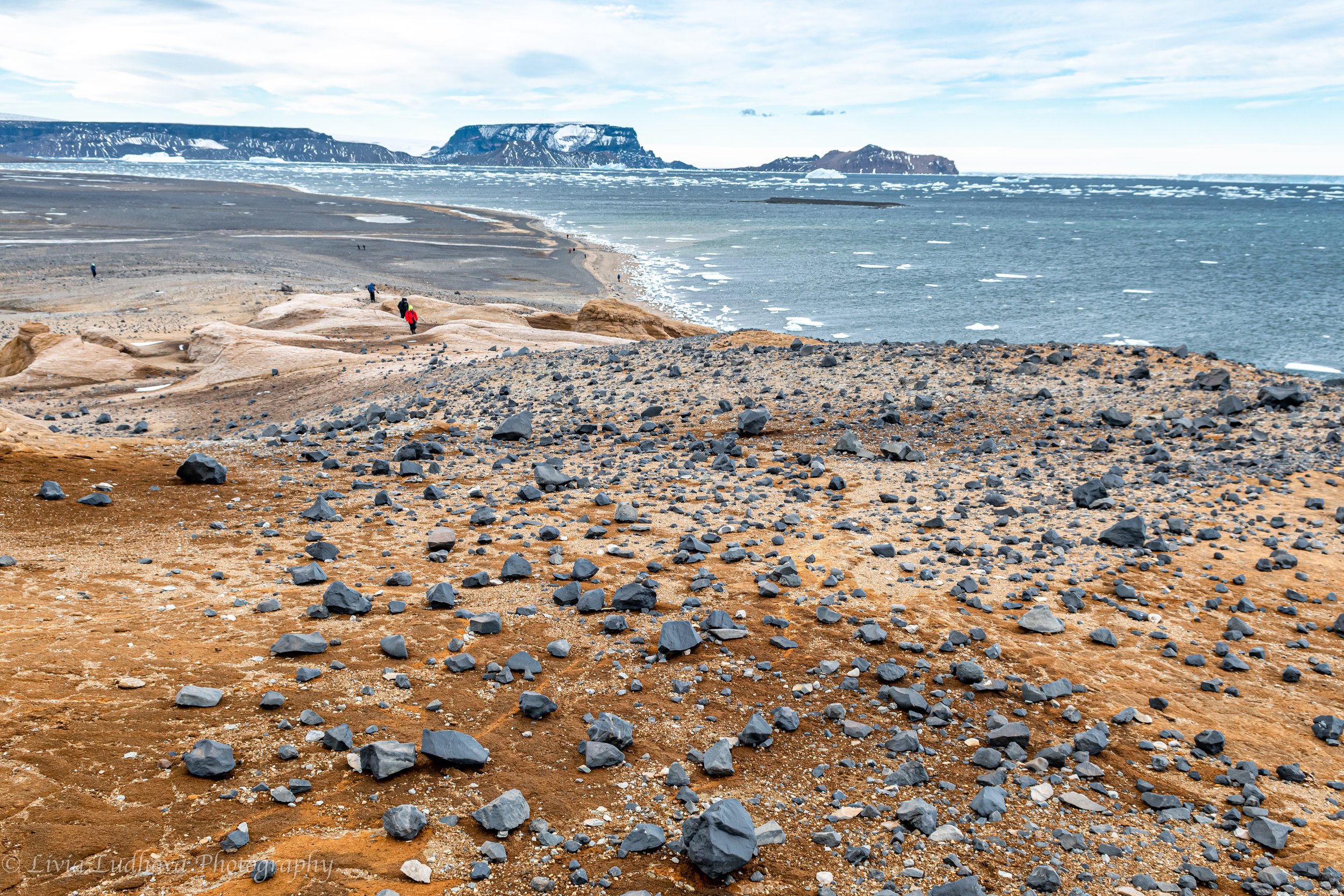Day 12 - False Island Point (Vega Island) and Naze Point (James Ross Island)
Thursday, March 5, 2020
Morning: We reached False Island Point on Vega Island using zodiacs, crossing through quite a few ice blocks. The water was full of krill, visible to the naked eye. On the shore, we found the skull of a crabeater seal, which has very specialized teeth for filtering water to catch krill. (The name is misleading—the crab-eater seal doesn’t actually feed on crabs! 😊 We climbed a hill that offered great panoramic views of the surrounding bays. The name "False Island" makes a lot more sense now. On our way down, we discovered a water stream, along which green moss was growing—an unexpected sight. It’s crucial not to step on any super-rare Antarctic vegetation. We also came across lichens and permafrost, with its typical hexagonal patterns formed when the upper layers thaw and refreeze.
Afternoon: A short cruise brought us to Naze Point on James Ross Island, where a dinosaur fossil had been found. We hiked along a beach rich with stones of many different types. Along the way, we discovered shells, algae, and, once again, a crabeater seal skull. Gradually, we began climbing a strange mix of sediments and basalt formations, which had eroded into spectacular shapes, including canyon-like structures. However, the wind started to gain strength, forcing us to return to the ship. After dinner, I spent a short time in the library before heading to bed, feeling rather tired.

False Island point at Vega Island


























































